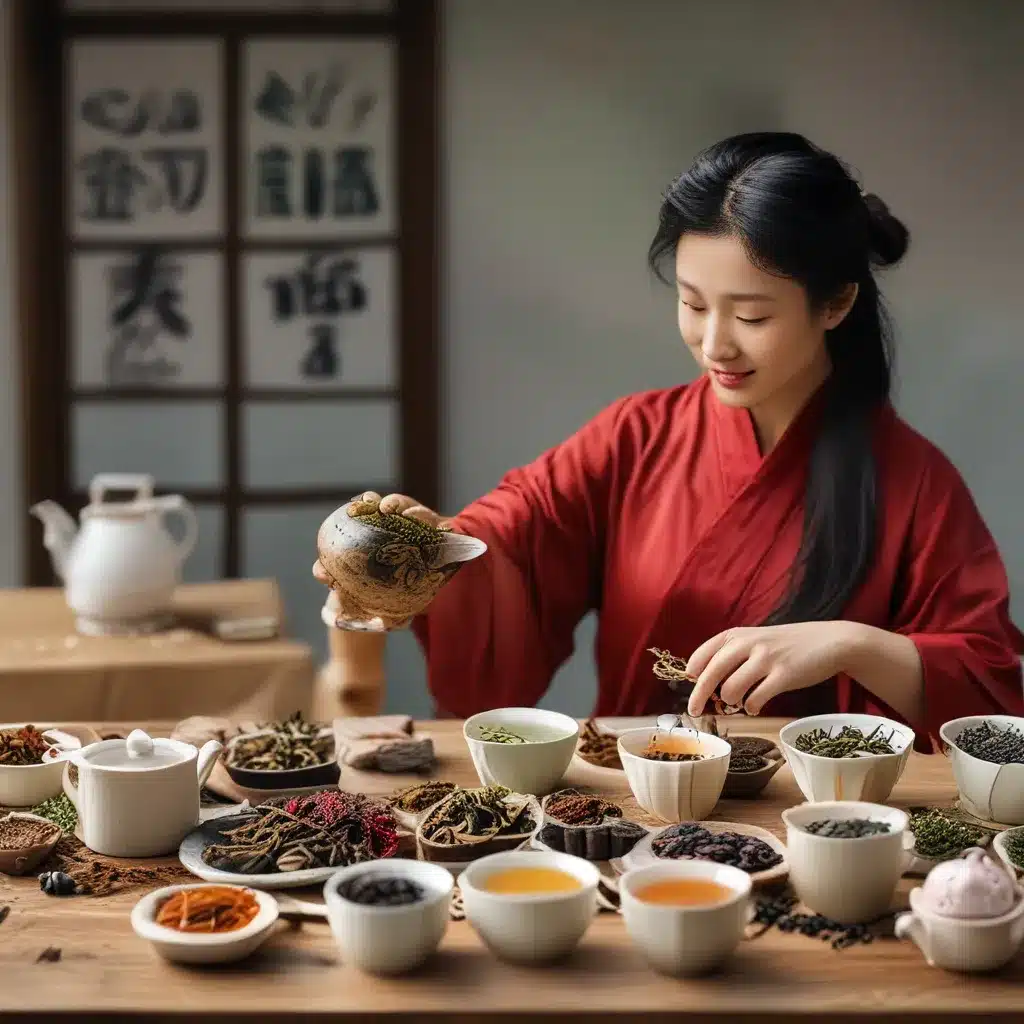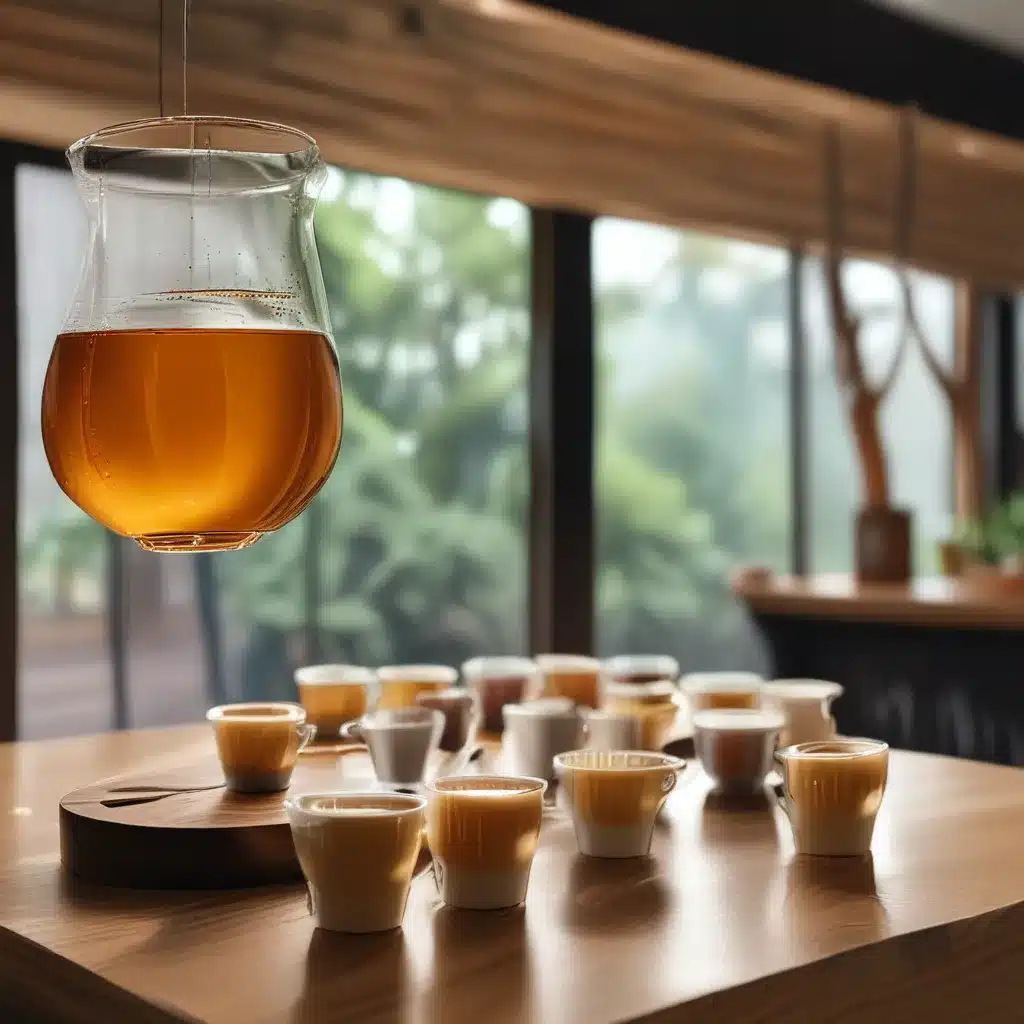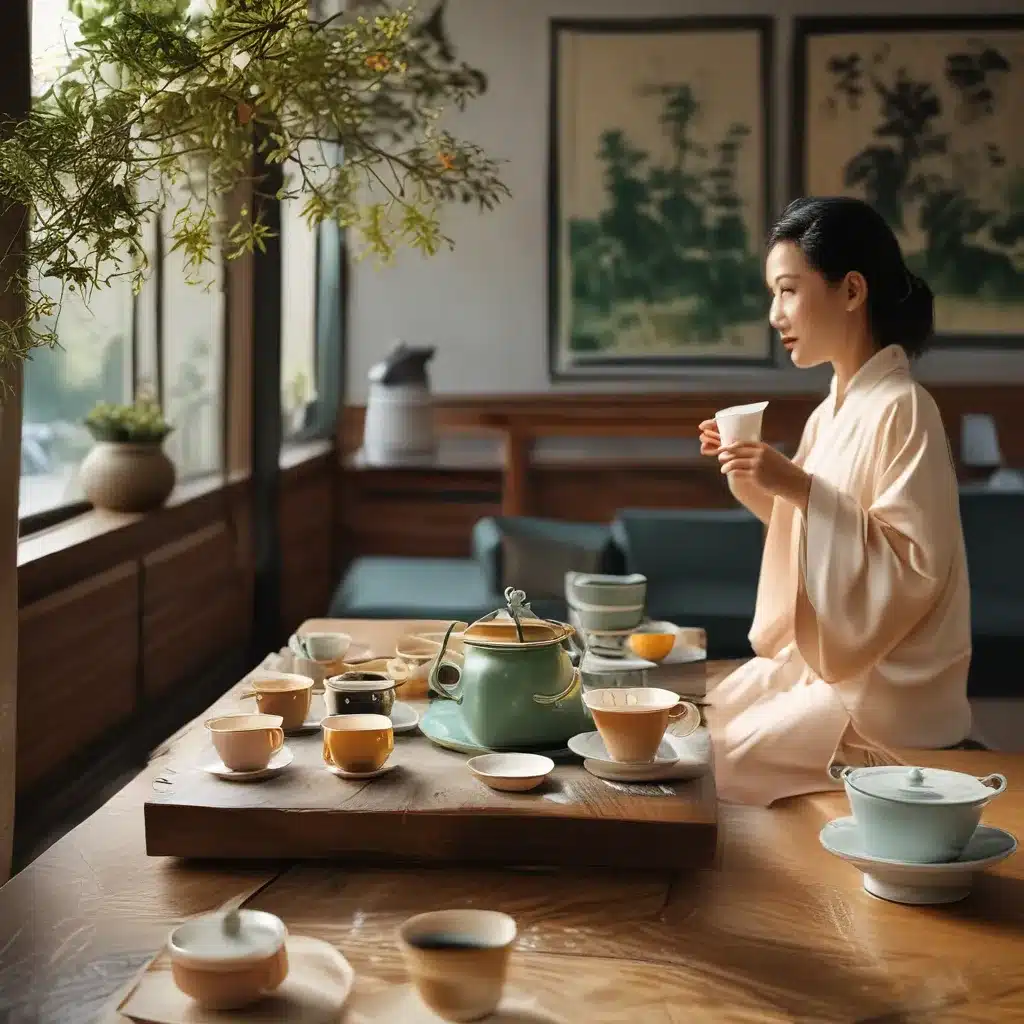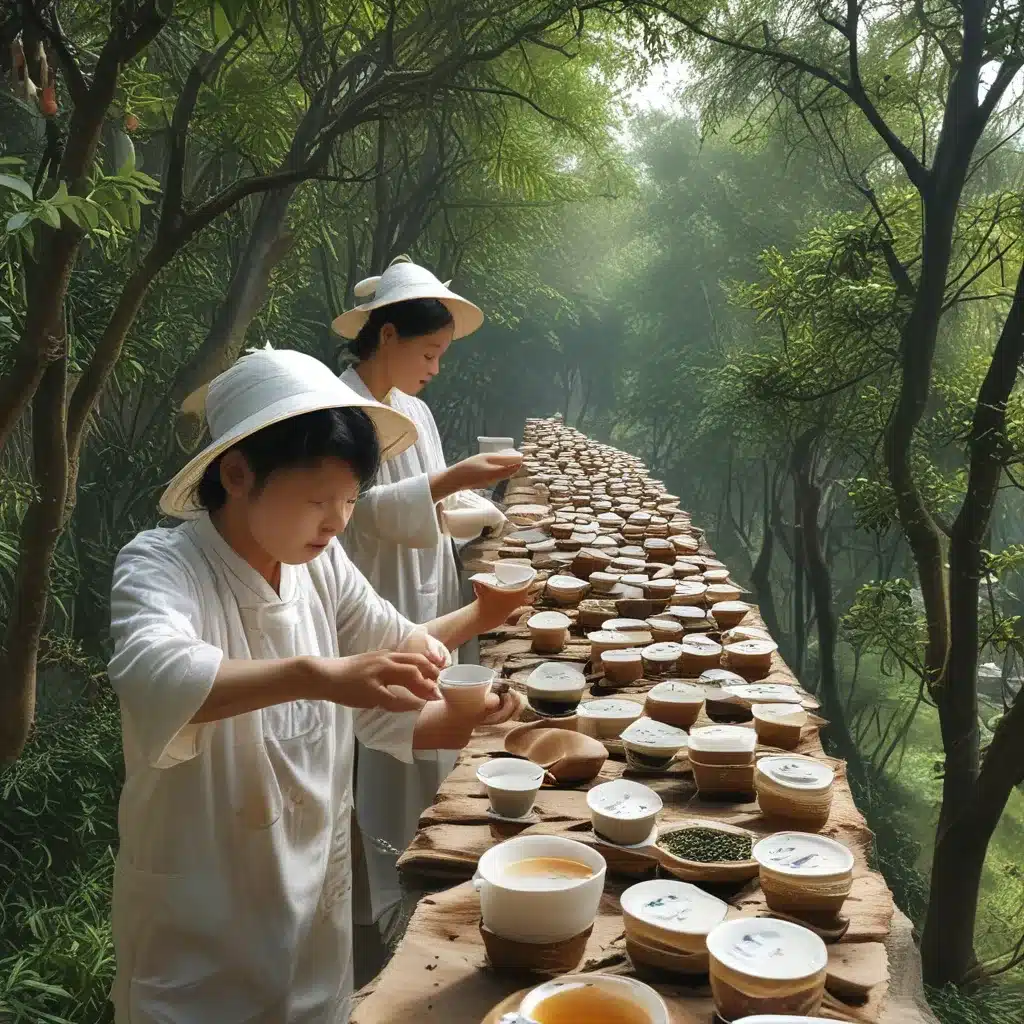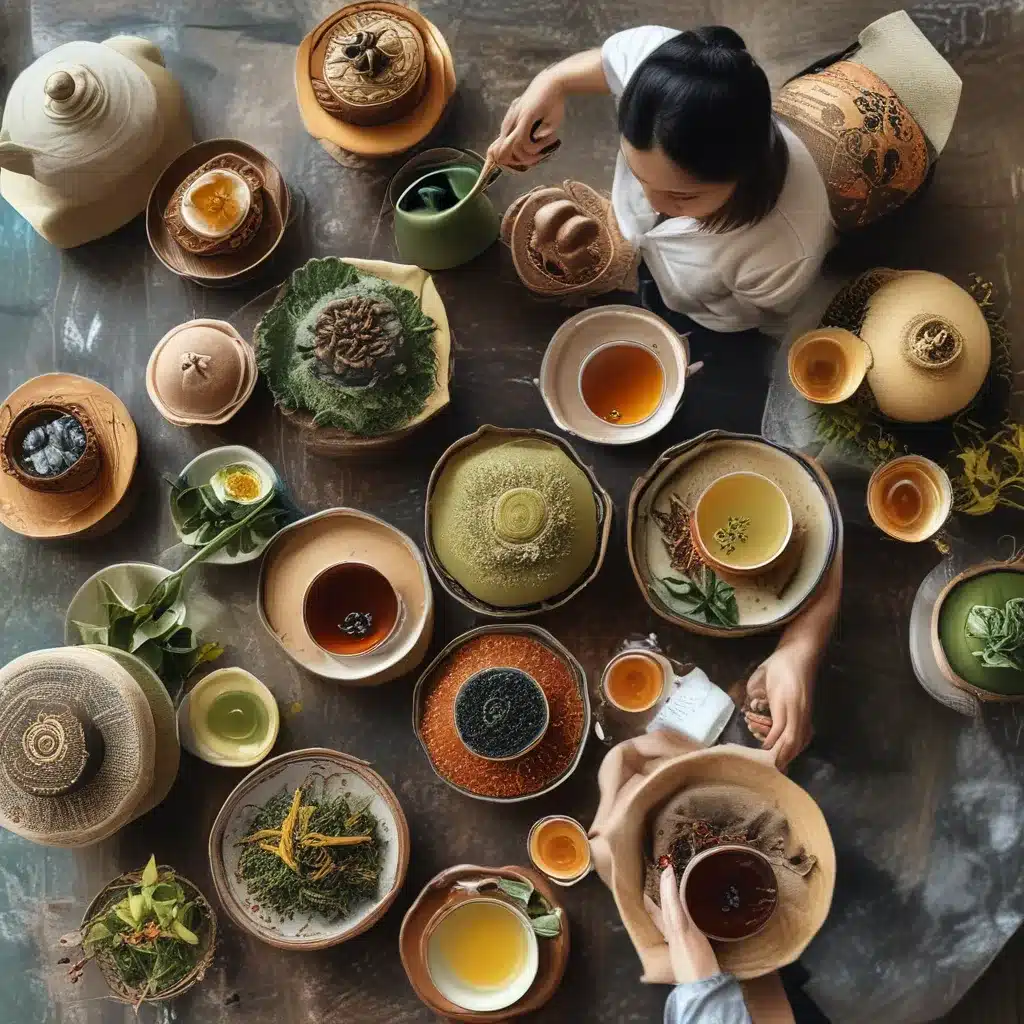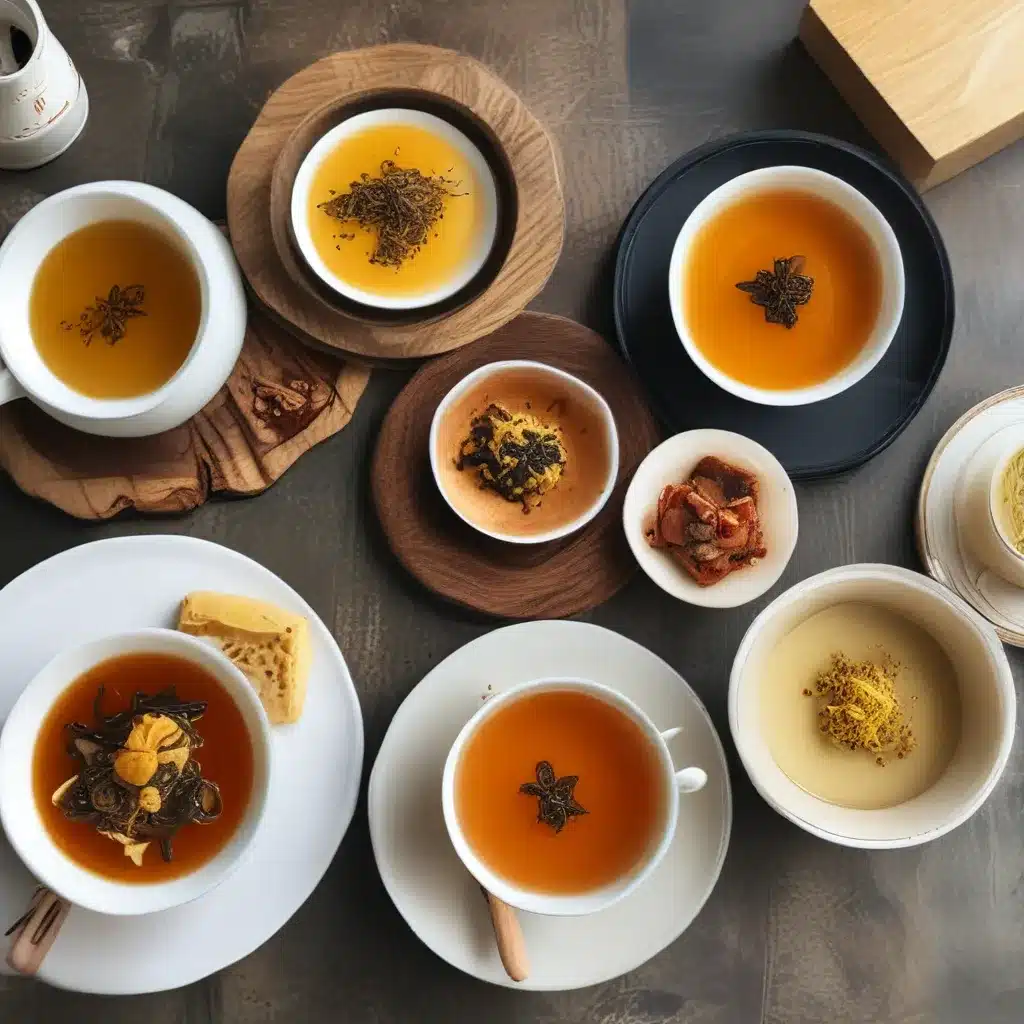
Discovering the Art of Tea in Shanghai
As I strolled through the bustling streets of Shanghai, the scent of spices and sizzling woks mingled with the aroma of freshly brewed tea, creating a sensory symphony that captivated my senses. It was as if the very air itself was infused with the essence of this dynamic city, where the ancient traditions of tea culture intertwined seamlessly with the vibrant culinary landscape.
I had come to Shanghai with the intention of unraveling the mysteries that lay at the heart of this intersectionality, eager to delve into the rich history and evolving practices that have made tea an integral part of the local cuisine. And what better place to begin my journey than at the iconic One Dragon Restaurant, a beloved eatery that has been serving up the finest Shanghainese fare for generations.
The Art of Tea Blending
As I settled into a cozy table, a warm cup of fragrant tea was promptly placed before me, its steam swirling in mesmerizing patterns. I couldn’t help but feel a sense of anticipation, knowing that this seemingly simple beverage held a world of complexity and nuance within its depths.
“Tea is not just a drink in Shanghai,” the server explained, a knowing smile playing on her lips. “It’s a way of life, an art form that has been perfected over centuries.” She proceeded to guide me through the intricate process of tea blending, a practice that lies at the very core of Shanghainese cuisine.
According to the Asia Foundation, the art of tea blending in Shanghai is a delicate dance, where master curators carefully select and combine various types of tea leaves to create harmonious flavors that complement the rich, umami-driven dishes that define the local culinary tradition.
“Each tea has its own distinct character,” the server continued, “and by pairing it with the right food, we can amplify the flavors and create a truly transcendent dining experience.” She proceeded to explain the nuances of different tea varietals, from the delicate, floral notes of Longjing to the robust, earthy tones of Pu-erh, and how their unique properties can be leveraged to enhance the dining experience.
Exploring the Tea-Infused Cuisine
As I sipped my tea, savoring its complex and captivating flavors, I couldn’t help but feel a sense of wonder at the level of expertise and dedication required to elevate this humble beverage to such lofty heights. And it was here, in the heart of Shanghai, that I would witness this artistry in action, as the kitchen staff seamlessly wove tea into the very fabric of the cuisine.
One dish after another, I was treated to a masterful display of culinary innovation, where the fragrance and essence of tea were expertly incorporated into every component. From the delicate steamed buns infused with the floral notes of Jasmine tea to the aromatic Pu-erh-braised beef, each plate told a story of the harmonious integration of tea and food.
As Culinary Backstreets noted, “The true test of a chef’s skill lies in their ability to balance the subtlety of tea with the bold, umami-driven flavors that define Shanghainese cuisine.” And at One Dragon Restaurant, the chefs had clearly mastered this delicate equilibrium, creating dishes that were not only visually stunning but also a true delight for the senses.
But it wasn’t just the food that captivated me; the entire dining experience was imbued with the essence of tea. From the artfully curated tea pairings to the elegant tea-inspired decor, every aspect of the restaurant seemed to be a celebration of this age-old tradition.
The Evolution of Tea Culture in Shanghai
As I immersed myself deeper into the world of Shanghainese cuisine, I couldn’t help but be struck by the rich history and cultural significance of tea that underpinned it all. According to the National Baccalaureate Educators Association, the relationship between tea and Shanghai’s culinary identity can be traced back centuries, to a time when the city was a bustling hub of trade and cultural exchange.
“Tea was not just a beverage, but a symbol of status and refinement,” the server explained as she refilled my cup. “The wealthy and influential would host elaborate tea ceremonies, showcasing their discerning palates and deep appreciation for the art of tea.”
Over time, this reverence for tea infiltrated every aspect of Shanghainese life, including the culinary traditions that have defined the city’s gastronomic landscape. Chefs began to experiment with incorporating tea into their dishes, using its unique flavors and properties to enhance the natural umami and complexity of the local cuisine.
Today, this intertwining of tea and food has evolved into a highly sophisticated and celebrated art form, one that is constantly pushing the boundaries of what is possible in the kitchen. From innovative tea-infused desserts to the seamless pairing of specific teas with particular dishes, the chefs of Shanghai have truly elevated the dining experience to new heights.
Embracing the Unexpected
As I continued my culinary journey through the streets of Shanghai, I found myself constantly surprised and delighted by the unexpected ways in which tea and cuisine intersected. In one hidden alley, I stumbled upon a modern tea house that had reimagined the traditional tea ceremony, combining it with a tasting menu of innovative, tea-inspired dishes.
In another corner of the city, I discovered a quaint bakery that had perfected the art of infusing tea into its delicate pastries, creating a harmonious balance of floral notes and buttery goodness that left me craving more.
It was in these moments of discovery that I truly began to appreciate the depth and complexity of the relationship between tea and Shanghainese cuisine. This was not just a matter of simple pairing or flavoring, but a profound and intricately woven tapestry of history, culture, and culinary artistry.
Conclusion: A Harmonious Symphony of Flavors
As I reluctantly bid farewell to Shanghai and the magnificent One Dragon Restaurant, I couldn’t help but feel a sense of profound appreciation for the intricate dance between tea and cuisine that I had witnessed. This city, with its rich heritage and innovative spirit, had taught me that the true essence of a culinary tradition lies not just in the food itself, but in the deep-rooted traditions and cultural narratives that give it life.
In Shanghai, tea is not merely a beverage – it is a way of life, a lens through which the city’s culinary identity is shaped and refined. And as I reflect on my time here, I can’t help but feel a sense of wonder and gratitude for having been a part of this captivating journey, where the intersections of tea and cuisine have created a harmonious symphony of flavors that lingers long after the last sip has been savored.

